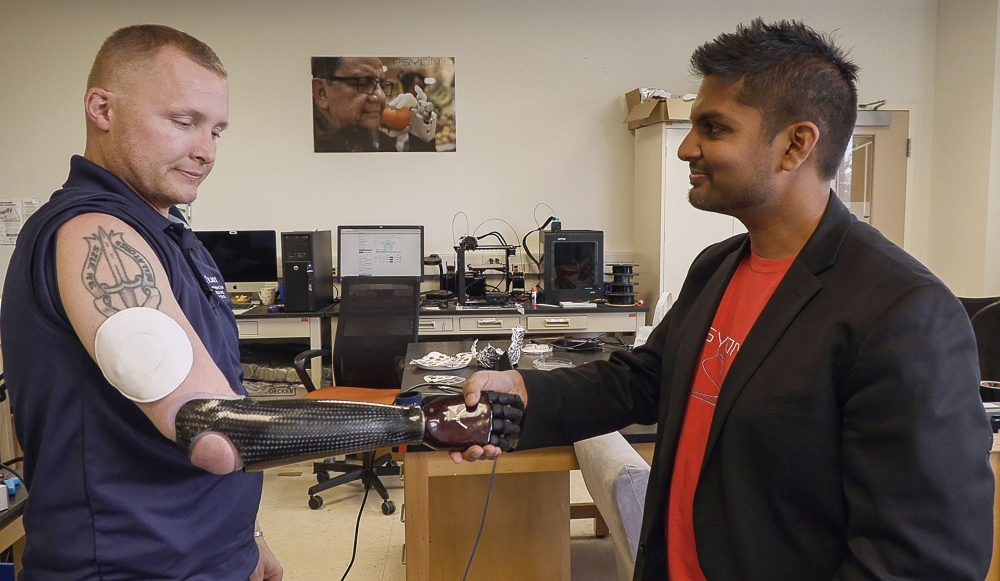
PARIS — Garrett Anderson has never known the pleasure of holding hands with both his children at the same time.
While deployed in Iraq with the US army in 2005, a bomb blast shot shrapnel through his right arm, severing it just below the elbow.
Today, the Illinois-based retired veteran wears a prosthetic which allows him to pick up objects and have basic mobility.
But it cannot duplicate the sense of touch.
A new second-skin "virtual reality" technology — designed to work with both prosthetics and gaming applications — may change that.
The system, developed by researchers at Northwestern University and described in the journal Nature, incorporates 32 individually programmable actuators — a device that emits electric impulses or vibrations — which are embedded into a pliable material made from silicone that adheres to the skin.
Controlled by a wireless touchscreen such as a smartphone or tablet, each actuator — the size of a small coin -- vibrates to create the perception of touch. The user can control the pressure and the pattern of the sensation.
Anderson tried the system, integrated with his prosthetic. While wearing a patch on his skin, he could feel sensations from his prosthetic fingertips transmitted to his arm.
Over time, the brain converts that sensation to what researcher John Rogers describes as a "surrogate sense of feeling".
The authors say the device could also be used for social interactions, offering a stroke of an arm to a loved one during a video call, or a pat of encouragement to a teammate during a virtual game.
"Our sense of touch provides the most profound, deepest, emotional connection between people," Rogers said in a statement.
In the study, published Wednesday, the authors described a scenario in which a young girl touches her grandmother's hand during a video call.
"We are interested in fine touch -- a finger stroke across the arm or shoulder, or a pattern of sensation that can reproduce a surrogate of touch," Rogers told AFP.
The device is wireless and does not require battery power. It uses the same near-field communication protocols found in smartphone banking applications, such as Apple Pay.
"With this wireless power delivery scheme, we completely avoid the need for batteries, with their weight, size, bulk and limited operating lifetimes," Rogers said. "The result is a thin, lightweight system that can be worn and used without constraint, indefinitely."
For Anderson, the technology may finally allow him to simultaneously clasp the hands of his children, aged 13 and 10.
But it will also have practical applications, such as being able to sense how much force he's applying when gripping a fragile object or touching someone.
"I remember when I was first injured, I grabbed my mom's hand and almost broke it because I did not know the amount of pressure I was using," Anderson told AFP.
Rogers said his aim is to improve quality of life, and that working with Anderson was "a deeply moving experience."
The prototype is only a first attempt, and researchers are working to make the device lighter and slimmer.
In the future, they would also like to explore thermal inputs, which will allow someone with a prosthetic hand to feel how hot or cold a drink is.
"When I explain to others how it works they are floored by what people are able to develop," Anderson said. — AFP